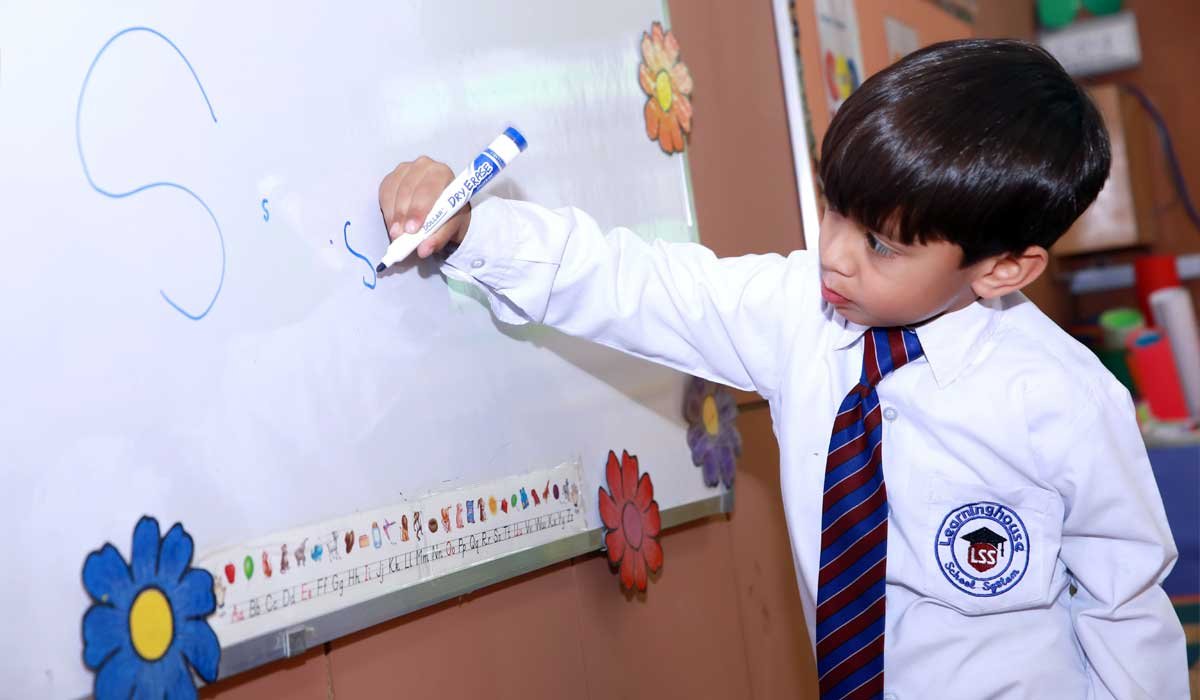1. Purpose
The purpose of this Language Policy is to articulate our beliefs about the place of language in the education we offer and the responsibilities which arise from these beliefs. It is intended to guide us to ensure access to a full curriculum through English, promote an international language, and alongside develop national language acquisition and support through curriculum and cross curricular activities. The policy is designed to underpin our instructional practice.
2. Scope
This Policy applies to students, parents, faculty, staff, and community Learninghouse School & College System.
3. Definitions
Academic Language-the words, grammar and discourse strategies used to describe complex ideas, higher-order thinking processes, and abstract concepts.
Additive Bilingualism and Biculturalism-a situation where a second language is learned by an individual or a group without detracting from the development of the first language; the second language adds to, rather than replaces, the first language. This is the opposite of subtractive bilingualism.
Interlingual Teaching and Learning-the inter prefix stands for international mindedness, the idea of the local and the global, of working together to create a better world. It also stands for all the home languages of the classroom. In the interlingual classroom, children not only learn their own mother-tongue but also about all the other classroom languages as well. Interlingual classrooms are places where children are allowed to use their languages
as cognitive tools. The teaching and the learning affirm the student's identity and all students see the relevance of the curriculum to themselves.
Basic Interpersonal Communicative Skills (BICS)-Everyday straightforward communication skills that are helped by contextual supports.
Cognitive/Academic Language Proficiency (CALP)-The level of language required to understand academically demanding subject matter in a classroom. Such language is often abstract, without contextual supports such as gestures and the viewing of objects.
Mother-tongue-is used in the research literature in various ways, it may denote the language used first, the language identified with as a native speaker, the language known best, the language most used. When used in this document, it includes all of those meanings.
4. Policy Statement
Philosophy Statement
At Learninghouse School & College System,we Listen to, respect and value each child as an individual. We encourage our students to understand and appreciate their own linguistic and cultural identities and to be open to the perspectives, values and traditions of others. We aspire to create a dynamic multilingual learning community in which the principal language of instruction is English, whilst at the same time promoting the development and maintenance of our students’ mother-tongues.
5. Guiding Principles
Our Beliefs and Practices about Language Teaching and Learning
We believe that language is fundamental to learning, permeates the entire curriculum, and is crucial to all learning. We strive to maintain a high standard for the explicit teaching of languages in our teaching practices, curriculum documents, and professionalism as educators.
We believe that every teacher is a language teacher and the teaching of language(s) is a shared responsibility across the School.
We strive to ensure that all members of staff are English language aware, the importance of teaching academic language, the importance of mother-tongue development, and the specific needs of students’ learning in a language other than their mother-tongue.
We add English onto the mother-tongue language(s) and culture(s) rather than replacing them.
We support students to express ideas confidently primarily in English communicate in a variety of modes, work effectively and willingly in collaboration with others and use their mother-tongue, with guidance, when negotiating and constructing meaning during lessons.
We believe that parents are an integral part of our community of learners and are a valuable resource who can provide crucial support for language learning. Hence we expect parents will support the students in conversing English at home as well so that students will be given an opportunity speak more in English and comprehend this language well in case this their second and third language.
We strive to create a school wide culture of caring and respect for the linguistic and cultural identities of our students, their families, faculty, staff, and community and to share with parents the importance of the maintenance and development of students’ mother-tongues.
6. Procedures/School Profile
English as the Principal Language of Instruction
English is the principal language of LSS. While national language is highly valued, English is our primary language of communication and instruction and we are committed to providing a high standard of communicating, teaching and learning in English.
Curriculum
LSS curriculum is inclusive, inquiry-based, student-centered, developmental, and differentiated. We use a school wide unit planner in line with our management calendar. We endeavor to teach language within a meaningful context, use appropriate academic language which is taught explicitly and is visible in the curriculum. We interrelate the skills of listening, speaking, reading, writing and media literacy across the curriculum. The planner dedicates space for explicit planning for language and learning with differentiation in each. It is intended that the teaching of language be made explicit in the content, skills and assessment sections of the planner.
English Language Learning (ELL) Support
The ELL program assists students because English in most of the cases is their second or third language in Quetta. The ELL allowing them full access to the curriculum as well as to the social and academic life of the School.
The ELL Department, consisting of mainly English teachers under the supervision of Headmistress.
Professional Development
LSS continues to create opportunities for expert led and embedded professional development in the areas of language development and teaching.

